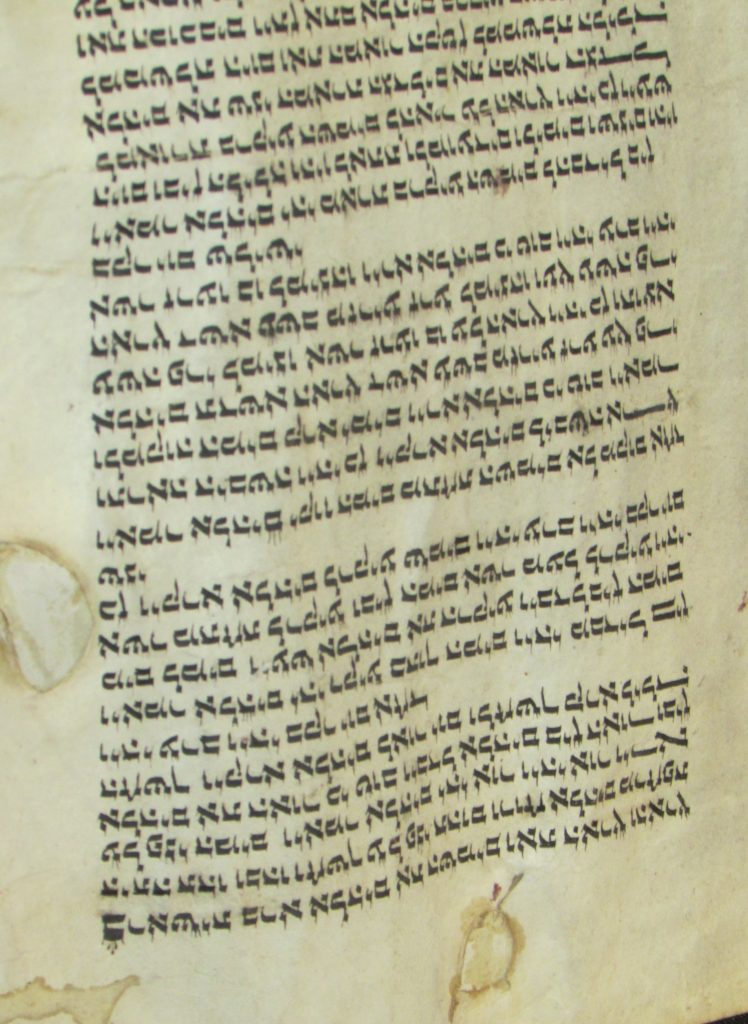A few years back, I had the privilege touching a nearly 600 year old scroll consisting of five books of the Bible. It was made from calf skins sewn together to form a 72-foot-long manuscript and was the spiritual centerpiece of a Jewish community in Poland for many years.
The scroll’s current owner, Josh McDowell, explained the painstaking process by which scribes reproduced these texts down through the centuries. Long before photocopiers, God took special precautions to make sure His word was accurately preserved, even over thousands of years. It was no accident that He chose the Jews to safeguard His Word for He knew that they alone had the discipline, the respect, and the procedures to pass it down accurately from one generation to the next.
For starters, each scribe had to memorize thousands of transcription rules before being allowed to copy the sacred text. Each Hebrew letter had its own formula for construction that had to be precisely followed with no cursive shortcuts. As they wrote with goose quills, no letters could touch and if they made a mistake, they had to rewrite the entire word. If the mistake involved the writing of God’s name, they had to rewrite the entire scroll.
In addition, even though the scribes knew all five books entirely from memory, they had to say each word aloud before copying it, and then say it aloud again afterward to make sure they had copied it correctly. Reproducing manuscripts by this meticulous process usually took two to three years and was often done by candlelight.
After completion, other scribes carefully checked for mistakes. They counted each letter to ensure that all 304,805 of them were included and that the center letter occurred in Leviticus 11:45. In addition, each letter was assigned a numerical value, similar to Roman numerals, and the mathematical sum of each line was also checked to make sure it matched the original. Such an exacting process ensured that the holy word of God would be preserved accurately down through the ages for each generation to read and obey.
Until 1946, many skeptics claimed the Bible contained so many copying errors that it was no longer reliable. Then Bedouin shepherds found the 2,000-year-old Dead Sea Scrolls and scholars were amazed to discover that what we have today is virtually identical to the ancient texts. They differ ever so slightly with only minor variations in punctuation and grammar, none of which affects any doctrine. New Testament books have also proven remarkably accurate to their earliest copies as well.
No other book has been so carefully preserved nor so thoroughly scrutinized. Even a photocopy of a copy of a copy becomes distorted, so God used other means. Why would he do this? So that we could know of His great love for us and have a completely accurate owner’s manual. He specifically wanted us to be able to recognize His Son and receive Him as our Savior.
Remarkably, this ancient scroll and its owner, Josh McDowell, will be at Antioch Church of the Brethren next Saturday, June 26 from 9:30am-4:00pm. After an abusive childhood, Josh set out to disprove Christianity only to become a Christian after studying the evidence. He has written or co-written over 150 books including More Than A Carpenter and Evidence that Demands a Verdict and has spoken to over 25 million people in everyday language that all ages can understand.
Josh will be explaining the scroll copying process in greater detail as well as Jesus’ Deity and resurrection and sharing his own story. The event is free and open to the public. For more information, call 540-459-3661.
The next time you pick up a Bible and begin to read, thank God for the faithfulness of all those scribes that have delivered this incredibly unique and special gift to us. Because of them, we can trust the Bible. May this assurance motivate us to read it, study it, and obey it.
Blessed reading, George
